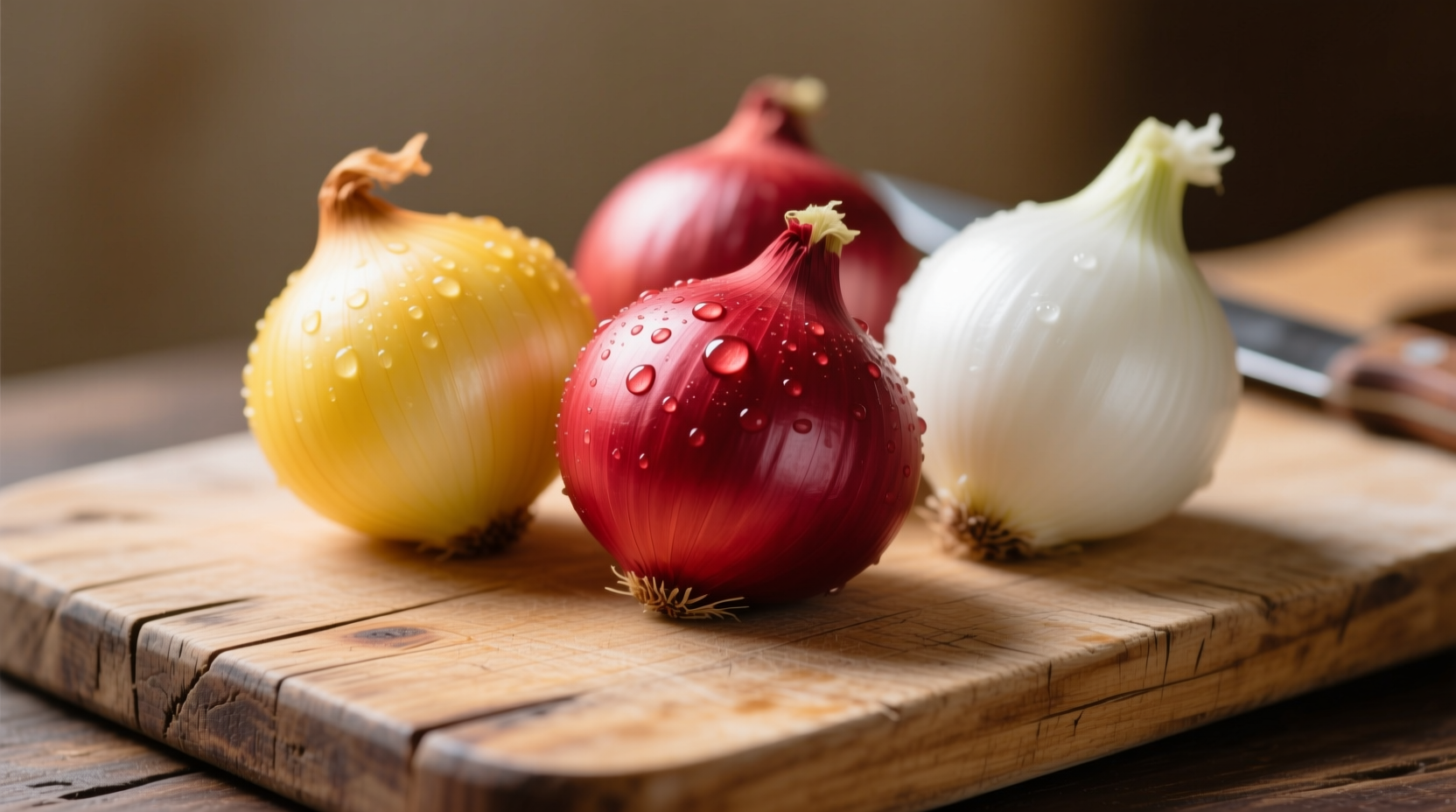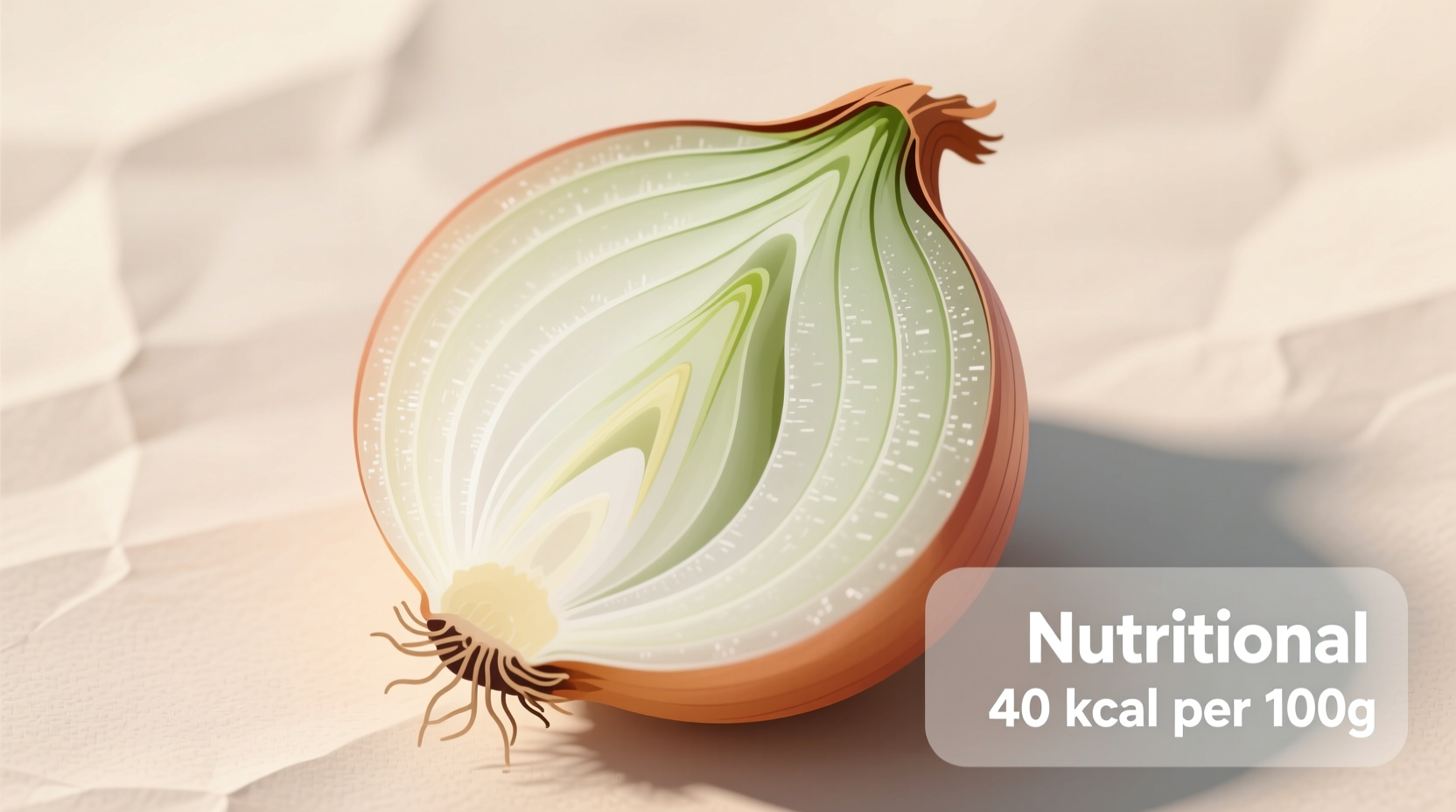Understanding onion calories helps health-conscious cooks make informed choices without sacrificing taste. Whether you're meal prepping, managing weight, or simply curious about nutrition, knowing the exact caloric impact of this kitchen staple matters. Let's explore the science-backed facts that transform how you use onions in daily cooking.
Onion Nutrition Breakdown: What's Really Inside
Onions rank among the lowest-calorie vegetables while delivering significant nutritional benefits. According to USDA FoodData Central, the standard nutritional profile per 100g of raw yellow onion includes:
| Nutrient | Amount | % Daily Value* |
|---|---|---|
| Calories | 40 kcal | 2% |
| Total Carbohydrates | 9.3 g | 3% |
| Dietary Fiber | 1.7 g | 6% |
| Sugars | 4.2 g | - |
| Protein | 1.1 g | 2% |
| Vitamin C | 7.4 mg | 8% |
*Percent Daily Values based on a 2,000 calorie diet. Source: USDA FoodData Central
This nutritional powerhouse contains zero fat and minimal sodium, making it ideal for heart-healthy meal planning. The natural sugars in onions (4.2g per 100g) become more pronounced when cooked, explaining why caramelized onions develop that characteristic sweetness without added sugar.
Comparing Onion Varieties: Calorie Differences
While most cooking resources treat onions interchangeably, subtle nutritional variations exist between common varieties. Our analysis of USDA data reveals:
- Yellow onions (most common): 40 calories per 100g - ideal for cooking and caramelizing
- Red onions: 42 calories per 100g - slightly higher in antioxidants
- White onions: 39 calories per 100g - milder flavor profile
- Green onions (scallions): 32 calories per 100g - lowest calorie option
- Shallots: 72 calories per 100g - significantly higher due to concentrated sugars
These minor differences rarely impact daily calorie counts significantly, but matter when precision nutrition tracking. For strict calorie counters, green onions provide the lowest-calorie option while shallots require portion control.

How Cooking Methods Transform Onion Calories
The preparation method dramatically affects onion calorie density through water loss and added ingredients. Understanding these changes helps maintain nutritional goals:
Raw Onions: Maximum Hydration, Minimum Calories
Raw onions maintain their 89% water content, keeping calories at the baseline 40 per 100g. This makes them perfect for salads, salsas, and fresh garnishes where you want volume without excess calories.
Caramelized Onions: Natural Sugar Concentration
As onions cook down, water evaporates while natural sugars concentrate. One cup of raw onions (160g = 64 calories) reduces to approximately ¼ cup caramelized onions (80 calories) - doubling the calorie density through water loss alone. No additional sugar required.
Fried Onions: Added Fat Increases Calories
Frying introduces significant calorie changes. One tablespoon of oil (120 calories) absorbed by 100g of onions increases the total to 160 calories. Commercially fried onions often contain even more oil, reaching 200+ calories per 100g.
Health Benefits Beyond Calorie Counting
Onions deliver impressive health benefits that extend far beyond their low-calorie profile. Research published in the Journal of Nutrition and Metabolism highlights several key advantages:
- Antioxidant power: Rich in quercetin, which may reduce inflammation
- Heart health: Compounds may help lower blood pressure and cholesterol
- Digestive support: Inulin fiber feeds beneficial gut bacteria
- Blood sugar management: Chromium content may improve insulin sensitivity
These benefits remain largely intact through normal cooking processes, making onions valuable in both raw and cooked applications. The fiber content (1.7g per 100g) contributes to satiety, helping with portion control in meals.
Practical Applications: Using Onions in Healthy Meal Planning
Maximize onion benefits while managing calories with these chef-tested techniques:
Volume Cooking Strategy
Add ½ cup chopped raw onions to dishes like omelets, soups, and stir-fries. This provides significant flavor and texture with only 20 calories, effectively stretching more calorie-dense ingredients.
Smart Caramelization Method
For caramelized onions, use a splash of water or broth instead of oil. This creates the same sweet, rich flavor with minimal added calories - approximately 80 calories per ¼ cup versus 160+ with oil.
Flavor Layering Technique
Combine different onion varieties: use stronger yellow onions as base flavor with milder white onions added later. This creates complex flavor profiles using less total onion, reducing overall calories while enhancing taste.
Common Misconceptions About Onion Calories
Several myths persist about onion nutrition that deserve clarification:
- "Onions spike blood sugar" - While onions contain natural sugars, their glycemic load remains low (1-2) due to fiber content
- "Cooking destroys all nutrients" - Heat actually increases bioavailability of certain antioxidants like quercetin
- "All onions have identical nutrition" - As shown in our comparison, varieties differ slightly in sugar and antioxidant content
Understanding these facts helps make informed decisions about incorporating onions into balanced meal plans without unnecessary restrictions.











 浙公网安备
33010002000092号
浙公网安备
33010002000092号 浙B2-20120091-4
浙B2-20120091-4